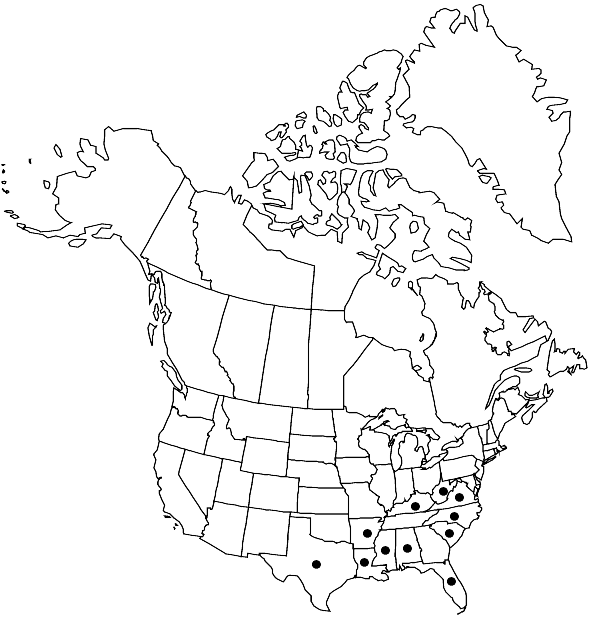Weissia ludoviciana
Bryologist 68: 282. 1965,.
Leaves long-lanceolate, base long-elliptic or narrowly ovate, shoulders absent, distal laminal margins plane or erect, apex broadly channeled, acute, mucro very strong, of 7–10(–14) cells; costal adaxial stereid band smaller than the abaxial; distal laminal cells 8–10(–12) µm wide. Sexual condition rhizautoicous. Seta short, 0.08–0.015 cm not including the vaginula. Capsule cleistocarpic, ovoid with a short-rostrate apiculus.
Phenology: Capsules mature fall–spring.
Habitat: Moist soil, fields, among grasses, roadside banks
Elevation: low to moderate elevations
Distribution

Ala., Ark., Fla., Ky., La., Miss., N.C., S.C., Tex., Va., W.Va.
Discussion
The gametophyte of Weissia ludoviciana is quite like that of W. brachycarpa. If it has a hybrid origin, then the archegoniate parent is the latter species. Weissia ludoviciana, W. muehlenbergiana, and W. phascopsis are similar in the short-seta, cleistocarpic capsules and long-lanceolate leaves, but differ most constantly in the traits given in the key. Additional differences observed, which may prove inconstant on revision, are: W. ludoviciana is rhizautoicous, with antheridia in extremely small, serrate-leaved buds, on soil near base of the archegoniophore, the capsule has stomates and a weakly differentiated annulus of 3–4 rows of smaller cells, and the calyptra is ca. 1 mm; W. muehlenbergiana is cladautoicous, the capsule lacks stomates and an annulus is not distinguishable, and the calyptra is 0.5–0.6 mm; W. phascopsis is cladautoicous, the capsule has stomates and the annulus somewhat differentiated as a ridge, and the calyptra is 1.2–1.4 mm. The hybrid Weissia ludoviciana × W. controversa was reported by W. D. Reese and B. E. Lemmon (1965).
Selected References
None.